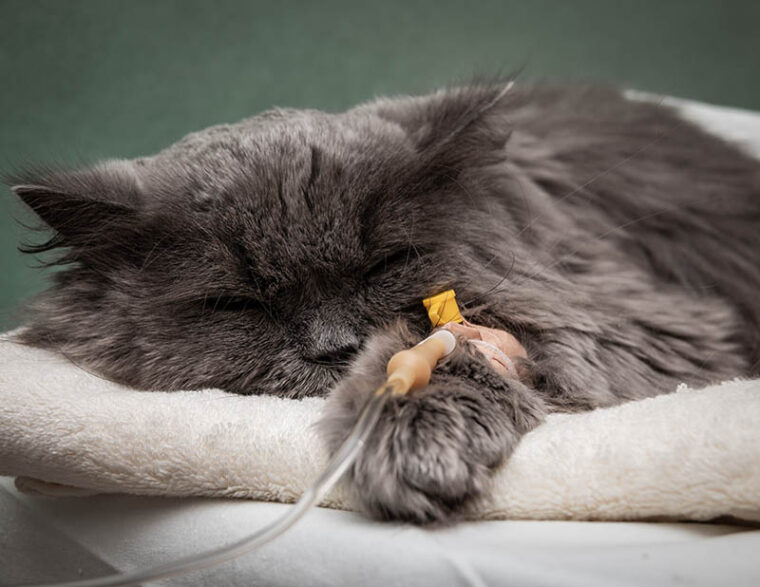
Click to Skip Ahead
Pneumonia in cats is a very broad topic, but it can most simply be defined as inflammation in the lungs. In pneumonia, the air sacs of the lungs that normally exchange oxygen can fill with fluid and pus; this results in making it difficult for the afflicted cat to breathe. There are many different types of pneumonia that can come about in several different ways.
In this article, we’ll learn about these as well as discuss the signs, causes, and treatments of a cat with pneumonia. So, let’s get started!
What Is Pneumonia?
Pneumonia is the most commonly seen respiratory disease and as mentioned, is essentially inflammation in the lungs. It can develop very rapidly (called acute) or can develop and continue over a longer period of time (termed chronic). Whether acute or chronic, pneumonia can cause a host of problems for an individual suffering from it.
When pneumonia occurs, there is often a more-than-normal quantity of secretions and exudates present in the lungs that are coupled with the body’s inability to remove them efficiently. The disease process can affect one or both lungs there are various distinctions of where it may be present within the lung itself. For example, it may range from only affecting one smaller focal area of the lung, to affecting a larger area consisting of the lung lobe, all the way to diffusing throughout the entire lung or lungs.
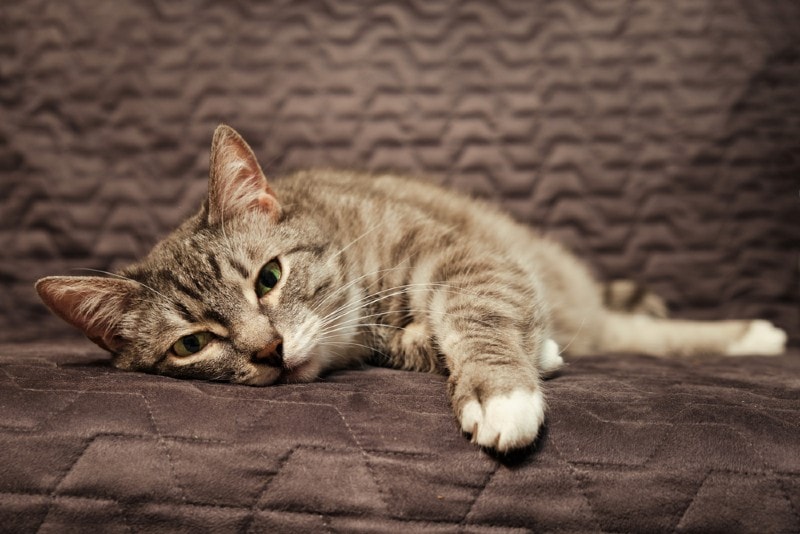
There are various ways that pneumonia can be classified, which will be discussed more in-depth down below. Briefly, various infectious agents (such as bacterial, viral, fungal, etc.), aspiration (inhaling food, liquid, vomit, etc. down into the lungs), or other causes can all be potential primary sources. To complicate things, there may be a secondary cause in addition to a primary cause. It is important to note that no matter the primary cause, bacteria usually is or becomes a part of the pneumonia puzzle, even if it comes about as a secondary infection 1.
It is thought that several factors could be at play with the start of an infection, including the following: a very virulent agent that’s infectious, a large amount of the agent, the cat’s body being overwhelmed or weakened, and/or stress as a precursor and contributing factor. Predisposing factors could also come into play such as immunosuppression, aspiration, problems with the body being able to clear normal secretions, a cleft palate, or other ongoing diseases or infections.
What are the Signs of Pneumonia?
Signs of pneumonia can range from mild to severe and can progress over time.
What Are the Causes of Pneumonia?
There are numerous agents and causes of pneumonia and sometimes there may even be more than one at play at a time.
These causes of pneumonia can be direct, or they can follow soon after injury or trauma to the lung. This then may result in a secondary infection or exposure via inhalation, toxins arriving in the area from the blood or by aspiration, etc. In short, the underlying causes can be difficult to determine and are often multifactorial.
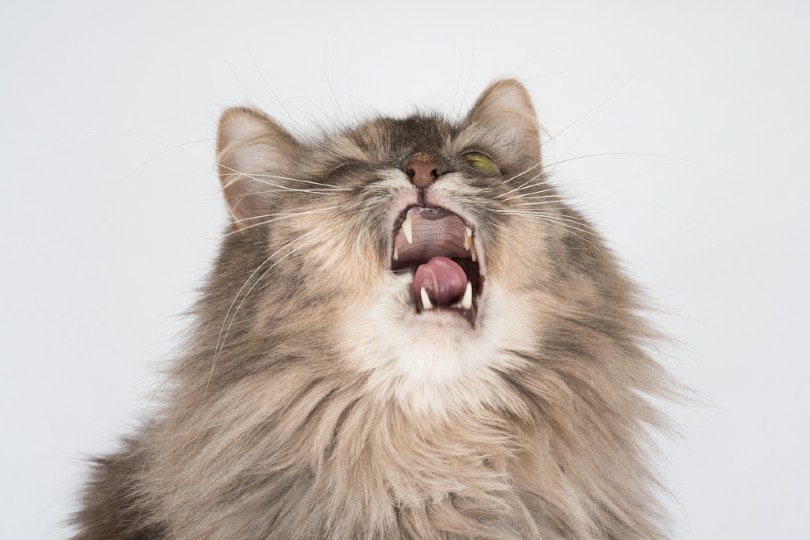
How Do I Care for a Cat with Pneumonia?
To diagnose pneumonia, your cat’s veterinarian will start with a detailed history and thorough physical exam. They will auscult, or listen very carefully, with their stethoscope to your cat’s heart and lung sounds. Important things they are listening for include the rate and rhythm of any noises (heartbeat and breathing lung sounds), muffled noises, increased or decreased lung sounds, crackles, wheezes, etc. Some tests that are often helpful include X-rays that can show specific lung patterns characteristic of pneumonia, as well as bloodwork that may show signs of an infection and inflammation. Pulse oximetry can be helpful because it can be used to find out a cat’s oxygen level in their blood and blood gas analysis (a specialized blood test with several values) can help determine respiratory function.
In addition, further tests such as a transtracheal wash (TTW) may be conducted with a long catheter to collect lower airway fluids. A bronchoscopy/bronchoalveolar lavage, (BAL), which utilizes a very small camera to observe the affected anatomy and collect samples to be analyzed further, can also be helpful. Fine needle aspirates or biopsies allow for the sampling of various areas of anatomy that can aid in a diagnosis. The culture and susceptibility of the exudate is often a very helpful tool in guiding medication choices.
Treatment for pneumonia will depend on the specific cause. For example, bacterial pneumonia, (no matter if a primary or secondary cause) will require antibiotics while fungal pneumonia will require antifungal medications. Medication will be required and is an important aspect of treatment. The specific type may change as more information or samples with pending results are collected.
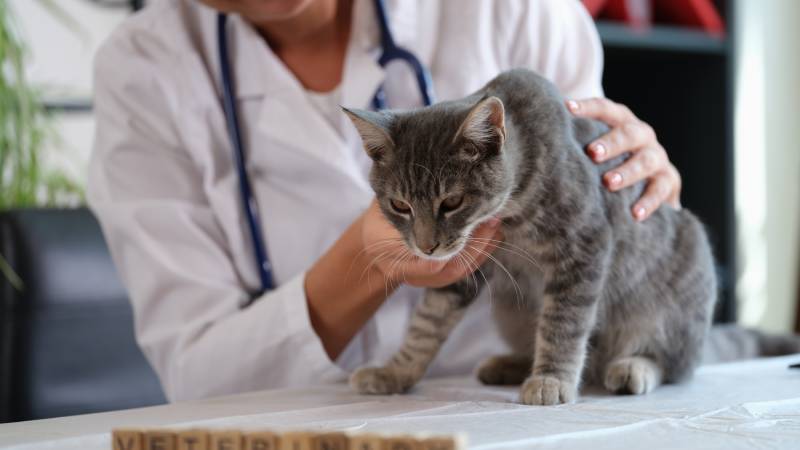
If the cause of the pneumonia is known or suspected to be infectious, it is ideal to isolate the cat while they are being treated. In addition, nebulization and thoracic coupage are often important aspects of treatment. Nebulization takes liquid medication and changes it into a mist that is inhaled and makes its way down to the lungs to treat an infection. Coupage, often done in conjunction with nebulization, is done by carefully tapping the chest walls to knock and loosen lung secretions so they can be coughed up and out by the afflicted cat.
In cats that are sicker, intravenous (IV) fluids, oxygen therapy, and a specific food plan may also be needed. Oxygen therapy can be done more short-term with flow-by oxygen (putting a mask that is attached to oxygen over an animal’s nose and mouth) or may also be achieved longer-term with an “oxygen cage.” An oxygen cage typically has a solid door with a high concentration of oxygen being pumped in. Normal room air is 20% oxygen and many times the oxygen cage will consist of 30–50% oxygen.
In extreme cases where the cat does not respond to medical treatment, a lung lobectomy (surgery that removes a portion of a diseased lung), may be indicated.
Frequently Asked Questions (FAQ)
What Can I Do at Home?
Once you have a diagnosis of pneumonia, your cat’s veterinarian will likely weigh how sick your cat is. If they are very ill, they may need to have hospitalized treatment first. Once a pet is stable and well enough to be discharged to go home, it’s imperative to follow your veterinarian’s continued instructions as they will still likely need medications and care at home. Below are some things you may be able to do in addition to help aid in your cat’s recovery.
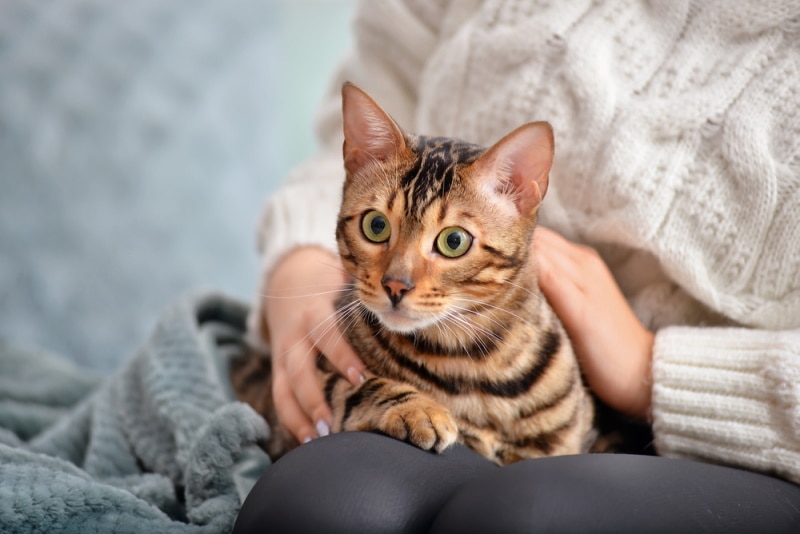
What Is My Cat’s Prognosis?
Your cat’s prognosis will depend on how severe their pneumonia is, its duration, as well as other factors such as the cat’s underlying health conditions or age. In many cases, with aggressive treatment, the prognosis may work out well. But, in the most severe cases, it may be more guarded to poor.
Conclusion
Pneumonia in cats can be due to a variety of causes. When present, it is a very serious illness that requires prompt medical attention! If your cat is displaying some of these signs or you suspect pneumonia, it is worth exploring with your veterinarian to determine if this is occurring and what the most effective treatment may be.
Featured Image Credit: Vladimir Gudvin, Shutterstock








